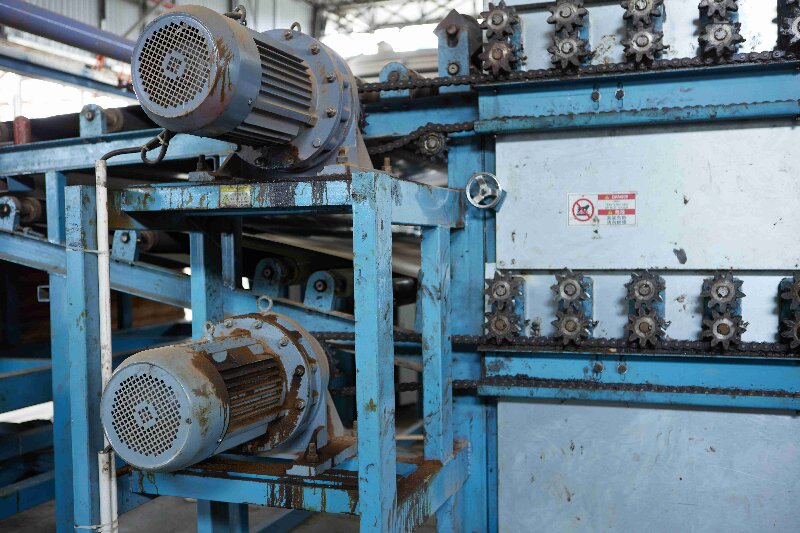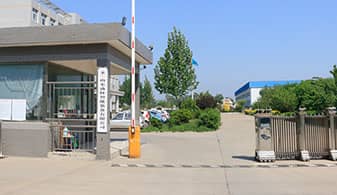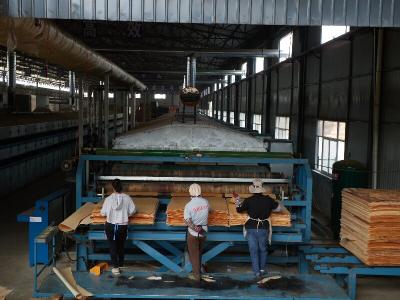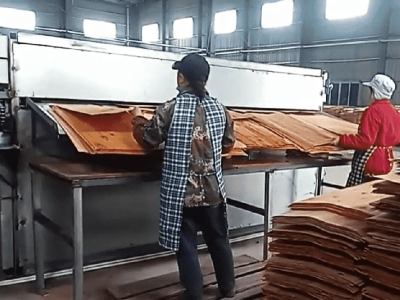Shine Redefines Veneer Drying: How AI, Robotics, and Vision Technology are Guaranteeing Perfection in Every Sheet
Shandong, China – In the heart of the global wood processing industry, a quiet revolution is underway. The art of veneer drying, a centuries-old process critical to the quality of everything from luxury furniture to structural panels, has long been a bottleneck fraught with variability, waste, and quality control nightmares. Traditional methods, reliant on manual loading, inconsistent heat application, and spot-check moisture sampling, often resulted in a frustrating yield of over-dried, brittle sheets or under-dried, unstable ones.
This era of uncertainty is now coming to an abrupt and decisive close. Shine Woodworking Machinery, a name synonymous with innovation in timber processing, has unveiled its latest generation of Automated Veneer Drying Machines—a technological tour de force that seamlessly integrates robotic material handling with state-of-the-art visual moisture detection to deliver unprecedented levels of quality, efficiency, and consistency.
Gone are the days of manual labor and guesswork. In their place stands a fully autonomous drying ecosystem that promises to redefine industry standards and empower manufacturers to achieve a near-zero defect rate.
The Core of the Revolution: A Fully Autonomous Drying Line
At first glance, the Shine veneer dryer is a monument to modern engineering—a long, enclosed chamber humming with purpose. But its true genius lies in the orchestrated symphony of automation at its entry and exit points.
1. The Automated Infeed System: Precision and Preservation
The process begins at the automated infeed station. Unlike manual systems, where operators physically stack green, pliable veneer sheets onto conveyor chains—a process that can lead to tearing, misalignment, and physical damage—Shine’s system employs a sophisticated robotic or smart conveyor loading mechanism.
Automated Board Feeding: Raw, freshly peeled veneer sheets are automatically picked and placed from a stack by a gentle yet firm robotic arm or a vacuum-assisted conveyor system. This eliminates human error and physical strain on the delicate sheets.
Precise Alignment: Advanced sensors ensure each sheet is perfectly aligned on the conveyor chain before it enters the drying chamber. This is not merely for neatness; precise alignment ensures uniform airflow and heat exposure across the entire surface of the sheet during the drying cycle. A misaligned sheet can create pockets of stagnant air, leading to uneven moisture removal.
Optimized Loading Rhythm: The system loads sheets at a perfectly calibrated, consistent rhythm. This maintains a constant load within the dryer, preventing the heat and airflow dynamics from fluctuating, which is a common cause of inconsistency in semi-automated systems.
This automated ingress does more than just save on labor costs; it guarantees that every single sheet begins its drying journey in an optimal, undamaged state, setting the stage for a perfect result.
2. The Intelligent Drying Chamber: A Climate of Perfect Control
Once inside the chamber, the veneer is subjected to a meticulously controlled environment. Shine’s dryers utilize a combination of high-velocity, temperature-stable airflow and precise heat sources (which can be steam, thermal oil, or gas, depending on the model). The internal control system, a powerful PLC (Programmable Logic Controller), constantly monitors and adjusts temperatures in different zones of the dryer based on the species and initial moisture content of the veneer.
However, the real breakthrough lies not just in maintaining a set temperature, but in how the system uses data to dynamically adapt the drying curve for different conditions, a capability that is dramatically enhanced by the technology at the exit.
The Game-Changer: Vision-Based Moisture Detection and AI Analysis
As the now-dried veneer sheets emerge from the far end of the chamber, they pass under what appears to be a simple scanner bar. This unassuming component is, in fact, the brain of the entire operation: Shine’s proprietary Multi-Spectral Visual Moisture Detection System.
This technology represents a quantum leap beyond traditional handheld moisture meters or fixed-point sensors.
Beyond Spot-Checking: 100% Inspection: Traditional methods involve an operator randomly selecting a few sheets from a batch and using a pin-type meter to take readings. This method is inherently flawed, as it misses the vast majority of the batch and only provides data on the specific spots where the pins are inserted. Shine’s vision system scans every square inch of every single sheet that passes through the line. It is a 100% inspection process, leaving no room for defective products to slip through.
The Science of Spectral Imaging: The system operates by projecting specific wavelengths of light onto the surface of the veneer and analyzing the reflected light with high-resolution cameras. Water molecules within the wood interact with these specific wavelengths in a unique, quantifiable way. By analyzing the reflectance data, the system’s sophisticated algorithms can construct a detailed, high-resolution moisture map of the entire sheet.
Real-Time Data Visualization: This is not a hidden process. Operators can view the results in real-time on a central HMI (Human-Machine Interface). The display shows a color-coded map of each veneer sheet—deep blue indicating areas well below the target moisture content, green for perfect, yellow for borderline, and red for areas that are still too damp. This immediate visual feedback is transformative for quality control.
3. The Smart Outfeed System: Sorting and Self-Optimization
The data generated by the vision system does not just inform; it acts. This is where the closed-loop automation truly comes to life.
Automated Sorting: As each sheet is scanned, its unique moisture profile is instantly analyzed. The automated offloading system, often comprising robotic arms or intelligent diverter gates, then sorts the sheets in real-time.
Sheets that fall within the perfect moisture range (e.g., 6-8%) are gently stacked for packaging and shipment.
Sheets identified as under-dried are automatically diverted to a separate stack to be sent back for a secondary, shorter drying cycle.
Over-dried sheets are also separated, preventing them from being mixed into a high-quality batch.
The Closed-Loop Feedback: This is the masterstroke. The moisture data from the vision system is fed directly back to the dryer’s central PLC. If the system begins to detect a consistent pattern of under-drying in the trailing edges of sheets, for example, it can automatically adjust the fan speed or temperature in the final zone of the dryer to compensate. Conversely, if the leading edges are consistently over-drying, it can make adjustments at the front. This creates a self-optimizing system that continuously fine-tunes its own parameters in response to real-world results, accounting for variables like ambient humidity, variations in raw material, and fuel quality.
Tangible Benefits: Transforming Business Outcomes
The integration of these three systems—automated infeed, intelligent drying, and vision-guided outfeed—delivers profound and measurable benefits to veneer manufacturers.
Uncompromising Quality Assurance: The primary benefit is the sheer consistency of the final product. Every sheet that leaves the "approved" stack has a verified, uniform moisture content. This eliminates downstream issues in the plywood pressing or furniture manufacturing processes, such as delamination, warping, or glue joint failures, which are often directly attributable to inconsistent veneer moisture.
Dramatic Reduction in Waste: By identifying and segregating sub-standard sheets, manufacturers prevent the costly practice of re-processing entire batches or dealing with customer returns. The ability to salvage under-dried sheets with a second, targeted pass further boosts yield. Over-dried sheets, which were once a total loss, can now be identified and potentially used for less critical applications.
Significant Labor Optimization: The fully automated process from loading to sorting drastically reduces the need for manual labor on the drying line. Operators are elevated from performing physically demanding, repetitive tasks to supervisory roles—monitoring the HMI, managing the workflow, and handling exceptions. This leads to a safer work environment and allows human expertise to be applied to more valuable areas of production.
Enhanced Production Throughput and Traceability: The non-stop, high-speed automation increases the overall throughput of the drying line. Furthermore, because every sheet is scanned and its data is logged, manufacturers gain an unprecedented level of traceability. They can pull production reports showing the moisture distribution for every batch processed, providing invaluable data for process refinement and guaranteed quality certificates for their customers.
A Vision for the Future of Wood Processing
Shine’s Automated Veneer Drying System is more than just a piece of machinery; it is a statement of intent. It demonstrates that the wood processing industry, often perceived as traditional, is fully capable of embracing and leveraging the technologies of the Fourth Industrial Revolution—IoT, AI, and advanced robotics.
"We are moving from an era of 'drying veneer' to an era of 'engineering perfect veneer'," says a Senior Engineer at Shine. "Our goal was to remove every variable, every uncertainty. By giving the machine the ability to 'see' the moisture and 'react' intelligently, we have not only guaranteed a superior product but have also future-proofed our clients' operations against the challenges of skilled labor shortages and intensifying quality demands."
For manufacturers worldwide looking to gain a competitive edge, reduce their environmental footprint through less waste and energy consumption, and produce a product that stands up to the most stringent quality audits, the path forward is clear. The future of veneer drying is automated, intelligent, and visually aware, and it is being built today by Shine.
About Shine Woodworking Machinery:
Shine Woodworking Machinery is a leading manufacturer and innovator in the field of wood processing equipment. With a commitment to research and development and a deep understanding of industry challenges, Shine provides cutting-edge solutions for veneer peeling, drying, and composing lines, serving a global clientele dedicated to quality and efficiency.






